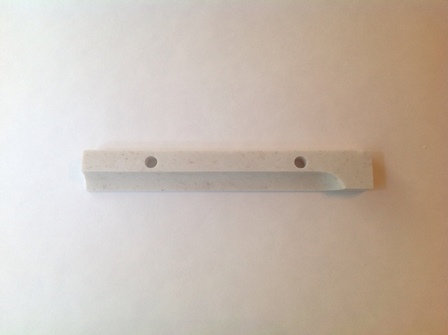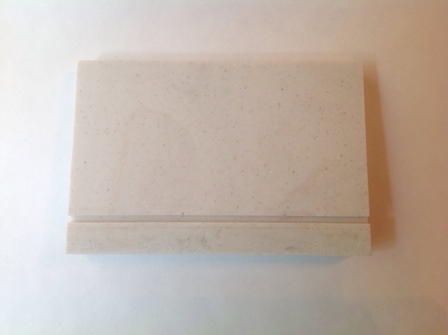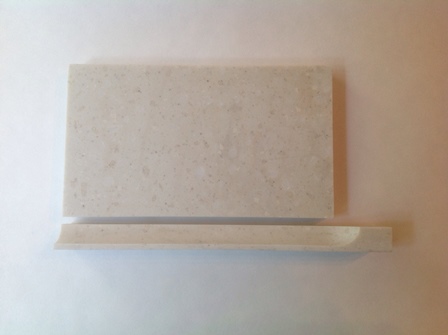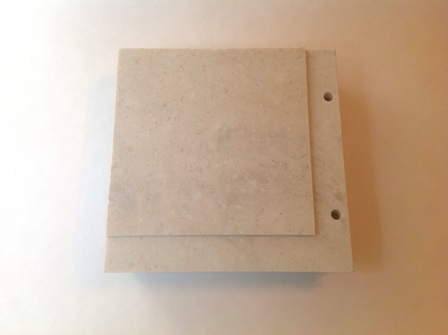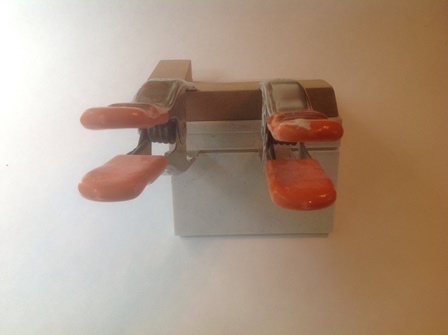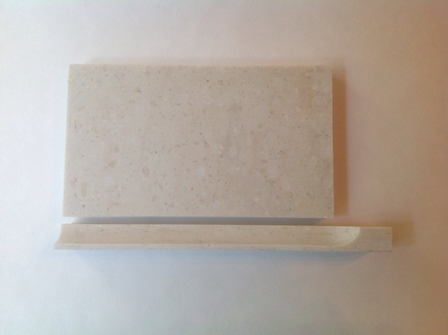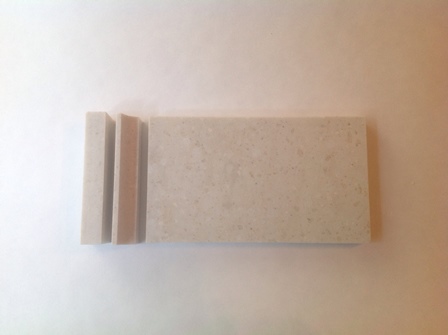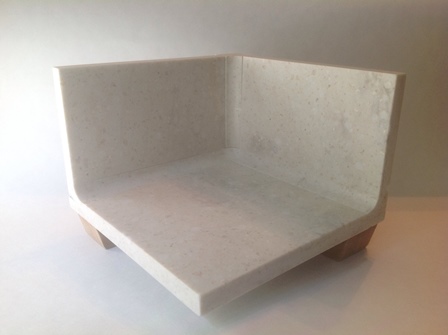Countertops Magazine ArchiveThe Importance of the Cove Backsplash in Solid Surface and How to Fabricate ItWhen it comes to solid surface countertops, the cove backsplash is one of the most powerful, yet overlooked, options. It not only provides numerous benefits, but also can be a great selling point and a good opportunity for an upsell. I really can’t say enough what an important feature it can be. When we think of countertops, most people think of a pretty basic design, with flat cut-out shapes that match the cabinetry it sits on. And with many of the surfaces being installed, that may very well be the case. However, with solid surface there is the ability to go well beyond the flat cut-outs. One of the options that allows this is the cove backsplash. As you probably know, the cove backsplash is basically a way to connect the countertop to the backsplash in a way that eliminates visible seams, with the top sort of curving up into the splash. This provides a number of benefits to the end user: Appearance – Kitchen tops that have a cove splash scribed to the wall have the look of custom craftsmanship, which, from a design aspect, looks beautiful year-after-year and stands the test of time. Also, even if the cabinets settle over time, the backsplash is part of the countertop, so you won’t be able to see any unsightly lines on the wall that settling may cause. Sanitation – Solid surface is already nonporous, meaning it doesn’t offer bacteria and germs a place to grow, but cove backsplashes go one step further. Because they have invisible seams and are adhered to the countertop, there are no cracks and crevices where the countertop meets the wall for dirt or food to become trapped, further eliminating places for dangerous microbes to hide. Convenience – Because the crevasse where the top meets the wall is replaced by a virtually seam-free curved cove, cleaning it is much less of a chore for the end user. So, the question then becomes, “Why aren’t there more kitchen countertops with cove being fabricated?” There are two main reasons: cost and lack of know-how in fabricating the cove backsplash. In response, I am going to show here a basic and relatively easy way to make a cove top that does not require any different tools than what are found in a typical solid surface shop. This will help solve both the lack of information and the cost problem on the fabrication side, which may help you to be able to offer this option to your clients without the price being a deal killer. Tools Needed: Table saw 3 hp router, 3/8-in. core box bit with a ½-in. shank (see Figure 1) 7/8-in. rabbit bit with a ½-in. shank (see Figure 2) The Process: Step 1 - Using the 3/8-in. core box bit, rout the length needed on the full sheet of solid surface before cutting your cove strips. Routing before you cut the strips from the sheet will make it easier to manage.
Step 2 - Using the table saw, cut the routed end off of the sheet in a 7/8-in.-wide strip. This will become the actual cove for the top/splash. Note the back of the strip should have a ½-in deck. Step 3 - Cut the piece of solid surface needed to make the desired backsplash height and length. Remember to account for the thickness of the cove strip (and also the depth of the rabbit you will be cutting into the top in Step 7).
Step 4 - Run the back side of the backsplash through the table saw at a depth of 1/4 in. about 1 in. up, creating a groove. This groove will be used to help clamp the backsplash to the top in Step 8.
Step 5 - After you have cut the groove, glue the backsplash to the cove piece. Step 6 - While the adhesive is drying, wipe away any excess glue. This will mean less sanding later.
Step 7 - Take the 7/8 rabbit bit and rout a rabbit on the back of the top to accept the backsplash.
Step 8 - Glue the cove and backsplash to the top using spring clamps to secure the top down into the groove. Remember to wipe away any excess glue while it is drying. Step 9 - After the glue has dried, sand to the desired finish. I like using a 5-in. random-orbit sander to smooth out the cove. (Just be careful not to over sand.) The Process for Cove Corners:
Step 1 - When routing your cove strip, stop the bit short of the run. This needs to be done because the backsplash will intersect into the corner. Step 2 - Cut a piece of cove to the height needed, remembering to take into account the thickness of the cove strip and the depth of the rabbit.
Step 3 - Cut a backup piece to beef up the back of the corner.
Step 4 - Glue all of the pieces up to the one selected section of cove you are working on (see Figure 10). Remember to wipe away any excess glue while it is drying. Step 5 – Sand out the cove. This is where much of the work will take place. Some have found using a dremmel tool or air file helps to speed up sanding, especially if you’re doing a corner cove. If you don’t want to tackle the cove corner, you could miter the corner instead. Using these methods, you should be able to make cove backsplashes relatively easily without a bunch of specialized tools or equipment. Then all you have to do is explain the value to your customers and you will have a new tool to increase your sales. About the Author |

